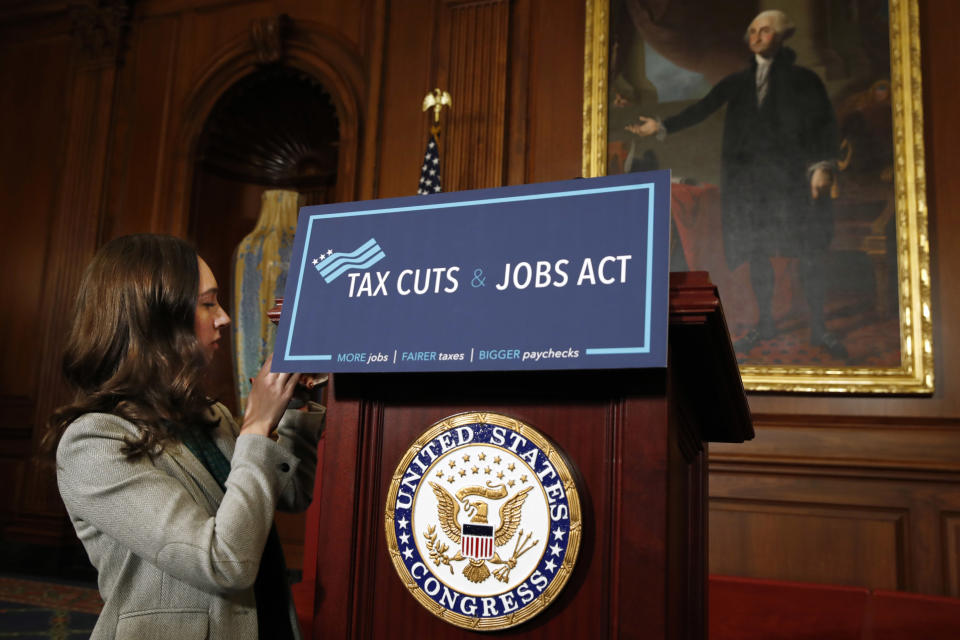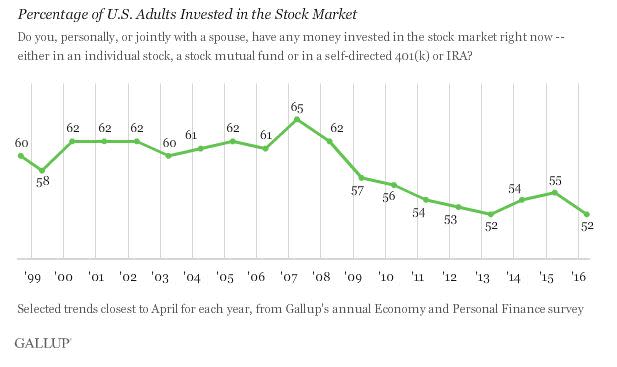Big winners from the Trump tax cuts: the shareholder class
President Donald Trump and his fellow Republicans insist a majority of Americans will benefit from the tax cuts they’re pushing through Congress. But they’re describing that majority wrong.
The biggest winners from big tax-cut legislation Congress could pass by the end of the year will be the shareholder class — people who own stocks and stakes in privately held companies. That’s because roughly 75% of the $1.5 trillion in net tax cuts being proposed would accrue to businesses. Wealthy families would get an additional break from killing the estate tax, leaving less than one-fourth of the net tax cut flowing directly to individual taxpayers — and even less to the middle class.

There are a lot of middle-class families that own stocks, of course. The shareholder class includes virtually everybody with a 401(k), pension or other retirement plan that invests in public equities. That still represents a majority of Americans. Gallup’s latest survey shows that 54% of Americans have some sort of stock-market investment.
But that’s the smallest portion of Americans owning stocks since Gallup started asking the question in 1999. In 2002, 67% of Americans owned stocks, with the percentage gradually drifting down since then.

Republicans aren’t characterizing their legislation as a windfall for investors. Instead, they’re emphasizing the direct and indirect benefits to middle-class families, even though those are modest at best. In 2018, a middle-income tax filer would save about $830 per year under the tax plan the House passed on Nov. 16, according to the Tax Policy Center. But that would decline to just $360 in annual tax savings by 2027, since some of the tax cuts for individual taxpayers would expire.
Will tax cuts boost the economy?
Republicans also claim their tax cuts will boost economic growth enough to raise the after-tax earnings of a middle-class family by anywhere from $1,200 to $4,000. But that’s dubious. There’s scant evidence that tax cuts alone have ever boosted economic growth, and they can harm growth by adding to the national debt and raising borrowing costs. By some measures, the middle-class Americans getting a tax cut next year would get a de facto tax increase in a few years, as key provisions expire and the negative effects of a larger national debt take their toll.
It seems clearer that the GOP tax-cut plan will boost stock values, at least in the short term. Overall, the House tax plan, which has many similarities with legislation the Senate is drafting, would cut $2.1 trillion in business taxes while adding $1.3 trillion in new taxes, for a net cut of $1.1 trillion, according to the Center for a Responsible Federal Budget. That’s most of the total $1.5 trillion tax cut. And the business tax cuts, unlike some of the individual cuts, would be permanent.
Businesses would benefit from slashing the corporate rate to 20% from 35%. That would push up after-tax income for many firms. Other provisions would add more to the bottom line, as well, including the repeal of the corporate alternative minimum tax and the immediate expensing of investment expenses. There would also be a tax repatriation “holiday” allowing U.S. firms to bring home foreign profits at a one-time tax rate between 10% and 14%. Since there would be no rules on what firms must do with repatriated profits, they’d likely spend at least some of it boosting dividends and repurchasing stock, moves that usually send stock prices higher.
Stock market outlook post tax cuts
Wall Street analysts differ on how much of the business tax cuts are “baked in” to current equity valuations, since investors have anticipated such changes since Trump won the presidency more than a year ago. But the outlook for stocks during the next year or two is remarkably bullish for a market that is in its ninth year of expansion.
Numerous forecasters are predicting double-digit gains for the S&P 500 stock index in 2018, on top of a 14% gain so far this year. In a survey of analysts by S&P Capital IQ, revenue for the S&P 500 is expected to grow by 5.4% in 2018 and just 4% in 2019. But earnings are expected to grow by 18% and 11%, in large part because companies will fork over less in taxes.
The outlook for middle class prospects? Meh. Moody’s Analytics forecasts wage growth of just 3.2% per year through 2019, which is surprisingly weak given that the unemployment rate, at 4.1%, is almost as low as it can get. Mark Zandi, the firm’s chief economist, predicts that families earning less than $150,000 will keep an extra $500 per year under the GOP tax cuts. But Moody’s also predicts that middle-class families will save less in coming years, if they want to keep buying stuff at the prevailing rate, since earnings will barely keep pace with inflation. Lucky are those with a few bucks left to invest in the stock market.
Confidential tip line: [email protected]. Encrypted communication available.
Rick Newman is the author of four books, including Rebounders: How Winners Pivot from Setback to Success. Follow him on Twitter: @rickjnewman
